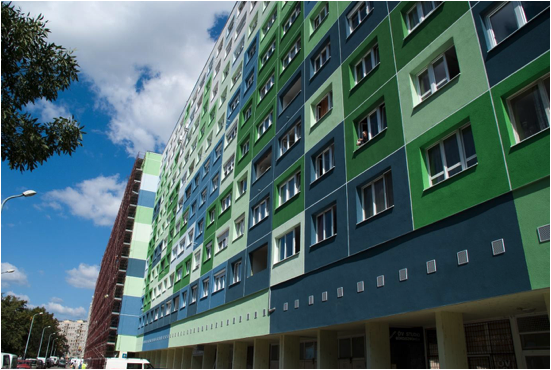Refurbishment of the “Village House”, Óbuda, Budapest, Hungary
Budapest, Budapest, Central Hungary, Hungary
The so-called Village House is the biggest residential building in Hungary with an estimated lifetime of 55-60 years. Waste of energy and high upkeep costs are huge issues for the residential blocks built in the socialist era when resource efficiency was not top priority. Since the share of block of flats is around 20% of the total buildings stock it is quite a widespread issue concerning 1,741,577 as of 2011.
From 2001 a development programme (the current being the third iteration now involving financial instrument backed by EU-funds) involving direct government finance and financial instruments supports insulation, refurbishment of doors and windows, improvement of technical building systems, such as heating and installing RES. The renewal of the Village House also involved socioeconomical research as the ultimate goal of project STACCATO was to provide replicable good practices & renovation concepts and accelerate the spread of RES. The heating costs had reduced by around 45-50% and related energy use decreased by the same degree whereas as an additional benefit of the project CO2 emission had decreased by an estimated 243 tonnes.
Benefits
The heating costs had reduced by around 45-50% and related energy use decreased by the same degree whereas as an additional benefit of the project CO2 emission had decreased by an estimated 243 tonnes.

